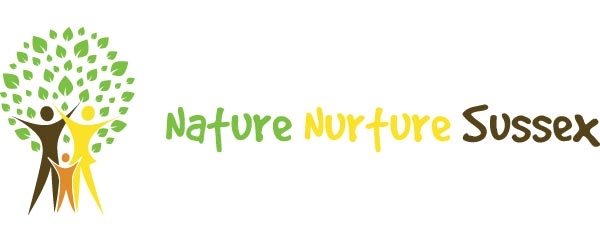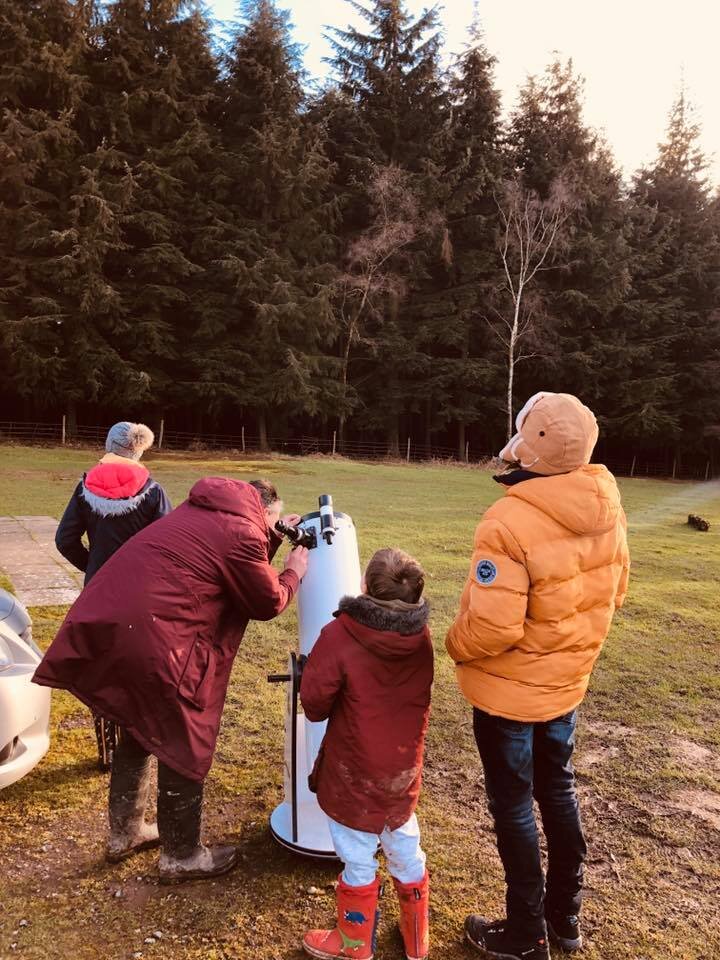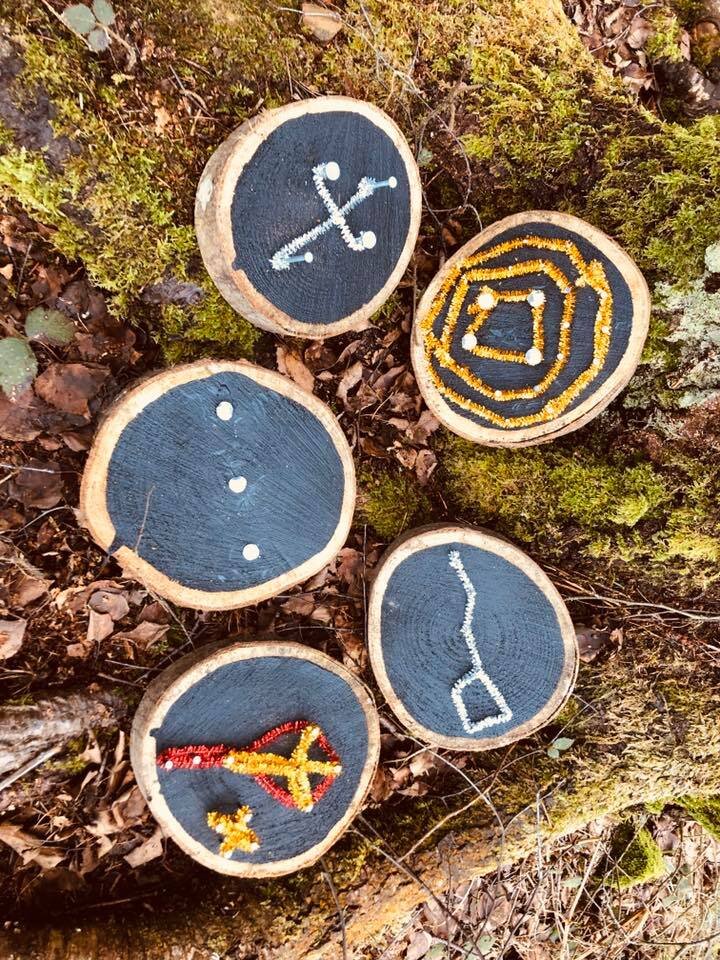Star Gazing
/By Mel Evans
Back in the Winter we hosted a late afternoon Forest School Session for participants of our regular Dragonflies SEND sessions. We invited local astrologer Steve Pond to bring along a telescope. Steve was fantastic at allowing the children (and adults) innate curiosity to emerge. They were able to ask questions throughout the session and the clouds cleared, with perfecting timing, so everyone got to see the moon through the telescope. This is quite an experience if you have never done it before and children and adults alike were amazed that they could see the craters (and also that the moon wasn’t made of cheese!)
During the session Steve explained he aims to encourage people to go outside and look up. Now is a great time to pay more attention to our night skies. The evenings are getting warmer and there may be less light pollution than there has been previously .
You don’t need a telescope and many things can be seen with the naked eye. You just need to know where and when to look. Steve hosts a Facebook page called ‘Above East Grinstead’ and shares information about what families can expect to see above the town. Steve welcomes anyone in the UK to join as believes the information will still be largely relevant. Below is a bit of a round up of what you might be able to see in May.
Just look up!
5th-6th May - Eta Aquarids Meteor Shower
These Meteors have been active since the 19th April and are set to continue until the end of May. They are expected to hit their peak in the next few days. The catch is you need to be awake between 3 am and 5 am to see them. There is lots of information here.
7th May - Super Moon ‘Flower Moon’
The May Moon has been traditionally coined the ‘Flower Moon'.’ This is the third and final Supermoon of 2020. The moon should be visible around, a nice civilised, 845 pm.
12th May - Close approach of Saturn
Saturn gets close to Earth on this date and can be visible from 1.39 am until dawn around 4.48 am. It will be located just above the horizon in the South.
18th May - Close approach of Jupiter and Saturn.
On this day Jupiter joins Saturn close to Earth. Both should be visible between 1.16 am and dawn around 4.37 am. Both will be located in the South just above the horizon. If that is a bit late (or early) for you you can look at the latest pictures of Jupiter collected by NASA Spacecraft Juno here.
End of May - Comet Swan
This Comet is currently close to Earth and those living in the Southern Hemisphere are experiencing great views. We might get to see this in the UK towards the end of the month, where it will appear as a bright green light with a blue tail.
Skylink Satalites
While you are looking at the Sky you might spot a satellite or two. You might even see the controversial Skylink satellites. You can find times you might see them in your location here.
If this all sounds a little daunting you could try going outside on a clear night and and spotting constellations. How many can you recognise? Can you make up any new ones? We had great fun replicating constellations (and making up some new ones) by hammering nails into a piece of wood that had been painted with blackboard paint. We then used pipe cleaners to link up the nail ‘stars’
We prepared our group for the fact that it was going to get dark by making lanterns. These are simply leaves stuck to a clean jam jar with double sided tape and held in place with string. They are hugely effective though and would be lovely for a back garden star gazing session.











